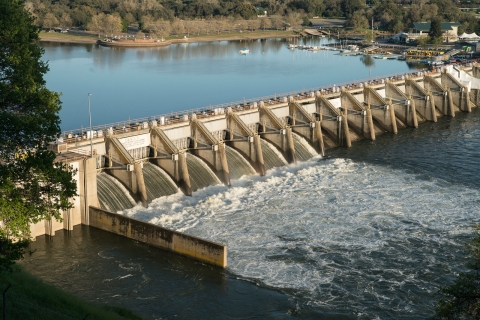EPA announces new funding for water infrastructure projects
Upcoming Events
Related News

Key Takeaways
On July 14, the U.S. Environmental Protection Agency (EPA) announced the availability of new funding through the Water Infrastructure Finance and Innovation Act (WIFIA) program. The WIFIA program is a federal loan and guarantee program within EPA designed to accelerate investment in the nation’s water infrastructure by providing long-term, low-cost supplemental loans for regionally and nationally significant projects, including many county water infrastructure projects. The new funding announcement could provide up to $6 billion in loans and leverage over $12 billion for water infrastructure projects.
Counties play an essential role in building and maintaining America’s water infrastructure and invest more than $134 billion overall in infrastructure per year. In addition, more than 70 percent of counties invest in storm sewer systems. Counties are regularly addressing water infrastructure needs, especially when preparing and responding to flooding threats and other water challenges and hazards, and call on the federal government to provide reliable, long-term and substantially increased investment in water infrastructure and protection of water resources.
Established under the Water Infrastructure Finance and Innovation Act of 2014, this announcement marks the fourth round of WIFIA funding. The announcement lists two major priorities for this round of funding: providing clean and safe drinking water and reducing lead exposure; and repairing, rehabilitating and replacing aging infrastructure and conveyance systems. EPA stated it will prioritize construction-ready projects in three areas: updating aging infrastructure; reducing exposure to lead and addressing emerging contaminants; and water reuse and recycling.
Typically, the WIFIA program helps finance larger water infrastructure projects – primarily those with an anticipated cost of $20 million or more. However, recognizing the need for investment in both large and small communities, Congress stipulated 15 percent of WIFIA funds be set aside each year for small communities serving fewer than 25,000 residents. Such projects have a lower cost threshold for eligibility, only requiring an anticipated cost of $5 million or more.
Prospective borrowers seeking WIFIA credit assistance must submit a letter of interest (LOI) and all required documents email to wifia@epa.gov. The application deadline is 90 days after being posted in the Federal Register. For more information on how to apply, click here.

Attachments
Related News

U.S. House of Representatives passes SPEED Act and other permitting reform bills
On December 18, the U.S. House of Representatives passed the SPEED Act (H.R. 4776). The SPEED Act would strengthen county involvement in decision-making and make needed commonsense reforms to the federal environmental review process.

Counties and Railroads: Shared Priorities for the Next Surface Transportation Bill
County leaders from across the country have a vital opportunity to ensure their infrastructure priorities are front and center.

House lawmakers introduce bipartisan legislation to support World Cup local transportation needs
On December 2, U.S. Reps. Rick Larsen (D-Wash.-02) and Burgess Owens (R-Utah-04) introduced the Transportation Assistance for Olympic and World Cup Cities Act (H.R.6348), a bipartisan effort to strengthen local transportation systems in communities preparing to host major international sporting events